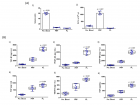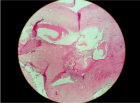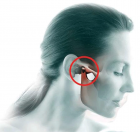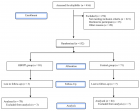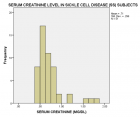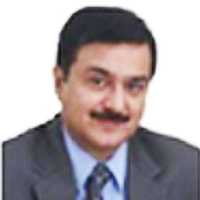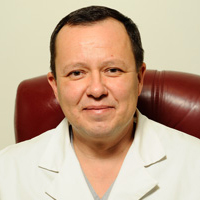Abstract
Research Article
Physiotherapy Undergraduate Students’ Perception About Clinical Education; A Qualitative Study
Pravakar Timalsina* and Bimika Khadgi
Published: 22 November, 2024 | Volume 8 - Issue 2 | Pages: 043-052
Background: Clinical education is an important component of physiotherapy education programs. It provides insights to the students in the fields of physiotherapy practice, develops leadership, and enhances their clinical skills in patient assessment, examination, diagnosis, treatment, planning, and intervention selection. The dimension of physiotherapy education is in the developing phase in Nepal. For further growth, the experience and the perception of the students are very important. Through this, the facilitators and barriers in physiotherapy clinical education need to be recognized. Therefore, this study aimed to explore the facilitators and barriers in physiotherapy clinical education in Nepal from a student’s perspective.
Objectives: The main objective of this study was to identify the perception of physiotherapy undergraduate students about their clinical education and to find out the facilitators and barriers in clinical education.
Methods: A qualitative research using focused group discussion was conducted. Ethical considerations were taken from respective departments and IRC approval was taken. BPT 3rd year, 4th year, and intern students of KUSMS were called to participate in the study. After the consent from the participants, focus groups of 6 participants (2 participants from each 3rd year, 4th year, and intern) were formed. In five FGDs, data saturation was observed and no further FGDs were conducted. FGDs were collected with audio tape recordings. The data were transcribed verbatim and translated into the English language. Then data coding was done and themes and sub-themes were generated from the codes.
Results: Through the transcribed and translated data, seven themes were generated which were clinical education, student expectation, student attitude and behavior, roles and responsibilities of clinical educators, exposure, resources, and miscellaneous. These headings explained the perception of facilitators and barriers.
Conclusion: The facilitators and barriers to physiotherapy clinical education were identified through student’s perspectives. These findings should be considered while preparing the guiding document for clinical education to enhance the quality of education.
Read Full Article HTML DOI: 10.29328/journal.jnpr.1001063 Cite this Article Read Full Article PDF
Keywords:
Physiotherapy; Clinical education; Facilitators; Barriers
References
- Dean CM, Stark AM, Gates CA, Czerniec SA, Hobbs C, Bullock LL, et al. A profile of physiotherapy clinical education. Aust Health Rev. 2009;33(1):38-46. Available from: https://doi.org/10.1071/ah090038
- Menatnia F, Noorizadeh Dehkordi S, Dadgoo M. Recognition of Barriers in Physiotherapy Clinical Education From Students’ Perspectives: A Content Analysis. Iran Rehabil J. 2019;17(1):67-74. Available from: http://dx.doi.org/10.32598/irj.17.1.67
- Alexanders J, Chesterton P, Gordon A, Alexander J, Reynolds C. Physiotherapy Student's Perceptions of the Ideal Clinical Educator. MedEdPublish. 2020;9(254):254. Available from: https://mededpublish.org/articles/9-254
- World Confederation for Physical Therapy (WCPT). Clinical education component of physical therapist professional entry level education. June 2011. Available from: https://world.physio/sites/default/files/2020-07/G-2011-Standards-practice.pdf
- Nepal Health Professional Council (NHPC). Minimum Requirements for the recognition of Bachelor in Physiotherapy. 2019;16. Available from: https://nhpc.gov.np/beta/uploads/requirements_pdf/BPT_Minimum_Requirement.pdf
- McMahon S, Cusack T, O’Donoghue G. Barriers and facilitators to providing undergraduate physiotherapy clinical education in the primary care setting: a three-round Delphi study. Physiotherapy. 2014;100(1):14-9. Available from: https://doi.org/10.1016/j.physio.2013.04.006
- Ramakrishnan S, Bairapareddy KC. Factors affecting physiotherapy clinical education in the United Arab Emirates: Perceptions of students and clinical educator. 2020. Available from: http://dx.doi.org/10.21203/rs.3.rs-17562/v2
- Douglas AH, Acharya SP, Allery LA. Communication skills teaching and learning in Nepal; what are medical students’ perceptions and experiences? A qualitative study. BMC Med Educ. 2020;20(1):391. Available from: https://doi.org/10.1186/s12909-020-02330-y
- Nair SP, Panhale VP, Nair N. Perceived barriers to evidence-based practice among Physiotherapy students. J Educ Health Promot. 2021;10(1):17. Available from: https://doi.org/10.4103/jehp.jehp_410_20
- Acharya R, Adhikari S, Oraibi S, Baidya S. Challenges and future development of physiotherapy education in Nepal. Int J Curr Res Rev. 2015;7(13):35-42. Available from: https://ijcrr.com/abstract.php?article_id=498
- Kc S, Subramaniam PR, Paudel S. Barriers and facilitators of utilizing research among nurses in Nepal. J Contin Educ Nurs. 2016;47(4):171-9. Available from: https://doi.org/10.3928/00220124-20160322-07
- Naidoo M, Chetty V, Mnguni N, Maddocks S, Pefile N, Mthethwa F, et al. Physiotherapy clinical education at a South African university. Afr J Health Prof Educ. 2018;10(1):13-8. Available from: https://journals.co.za/doi/abs/10.7196/AJHPE.2018.v10i1.987
- Sciences KUSoM. Curriculum for Bachelor in Physiotherapy. 2012:94.
- Tazakori Z, Mehri S, Mobaraki N, Dadashi L, Ahmadi Y, Shokri F, et al. Factors Affecting on Quality of Clinical Education from Perspectives of Operating Room Students. J Health Care. 2015;17(2):128-36.
- Entwistle N, McCune V, Hounsell J. Approaches to studying and perceptions of university teaching-learning environments: Concepts, measures and preliminary findings. Occasional report. 2002;1:1-19. Available from: http://dx.doi.org/10.13140/RG.2.2.33594.80329
- Prosser M, Trigwell K. Understanding learning and teaching: The experience in higher education. Maidenhead: McGraw-Hill Education (UK); 1999. Available from: https://books.google.co.in/books/about/Understanding_Learning_And_Teaching.html?id=2UHlAAAAQBAJ&redir_esc=y
- Delany C, Bragge P. A study of physiotherapy students’ and clinical educators’ perceptions of learning and teaching. Med Teach. 2009;31(9):e402-e11. Available from: https://doi.org/10.1080/01421590902832970
- Shankar RP, Dubey AK, Mishra P, Deshpande VY, Chandrasekhar T, Shivananda P. Student attitudes towards communication skills training in a medical college in Western Nepal. Educ Health (Abingdon). 2006;19(1):71-84.
- Hobbs C, Henley E, Higgs J, Williams V. Clinical education program strategies for challenging times. Focus Health Prof Educ. 2000;2(2):1-17.
- Harbour R, Miller J. A new system for grading recommendations in evidence based guidelines. BMJ. 2001;323(7308):334-6. Available from: https://doi.org/10.1136/bmj.323.7308.33420
- Guyatt G, Cook D, Haynes B. Evidence based medicine has come a long way. BMJ. 2004;329(7473):990-1. doi: 10.1136/bmj.329.7473.990. Available from: https://doi.org/10.1136/bmj.329.7473.990
- Lekkas P, Larsen T, Kumar S, Grimmer K, Nyland L, Chipchase L, et al. No model of clinical education for physiotherapy students is superior to another: a systematic review. Aust J Physiother. 2007;53(1):19-28. Available from: https://doi.org/10.1016/s0004-9514(07)70058-2
- Nyumba TO, Wilson K, Derrick CJ, Mukherjee N. The use of focus group discussion methodology: Insights from two decades of application in conservation. Methods Ecol Evol. 2018;9(1):20-32. Available from: https://besjournals.onlinelibrary.wiley.com/doi/full/10.1111/2041-210X.12860
- Powell RA, Single HM. Focus groups. Int J Qual Health Care. 1996;8(5):499-504. Available from: https://doi.org/10.1093/intqhc/8.5.499
- Krueger RA, Casey MA. Focus groups: A practical guide for applied research. 5th ed. Thousand Oaks: Sage Publications; 2014. Available from: https://books.google.co.in/books/about/Focus_Groups.html?id=tXpZDwAAQBAJ&redir_esc=y
- Kitzinger J. The methodology of focus groups: the importance of interaction between research participants. Sociol Health Illn. 1994;16(1):103-21. Available from: http://dx.doi.org/10.1111/1467-9566.ep11347023
- Stewart DW, Shamdasani PN. Focus groups: Theory and practice. 3rd ed. Thousand Oaks: Sage Publications; 2014. Available from: https://books.google.co.in/books/about/Focus_Groups.html?id=YU0XBAAAQBAJ&redir_esc=y
- Oyeyemi A. Perspectives on Clinical Education: How physiotherapy students learn in the clinic. Afr J Physiother Rehabil Sci. 2013;5(1-2):1-7. Available from: http://dx.doi.org/10.4314/ajprs.v5i1.1
- Chesterton P, Chesterton J, Alexanders J. New graduate physiotherapists’ perceived preparedness for clinical practice: A cross-sectional survey. Eur J Physiother. 2023;25(1):33-42. Available from: https://doi.org/10.1080/21679169.2021.1958007
- Gallasch D, Conlon-Leard A, Hardy M, Phillips A, Van Kessel G, Stiller K. Variable levels of stress and anxiety reported by physiotherapy students during clinical placements: A cohort study. Physiotherapy. 2022;114:38-46. Available from: https://doi.org/10.1016/j.physio.2021.12.002
- Nodehi Moghadam A, Abdi K, Kashfi Ardehjan P. Exploring the challenges of physiotherapy clinical education: A qualitative study. Iran Rehabil J. 2017;15(3):207-14. Available from: http://dx.doi.org/10.29252/nrip.irj.15.3.207
- Temesgen MH, Girma Y, Dugo T, Azeze G, Dejen M, Deres M, Janakiraman B. Factors influencing student’s satisfaction in the physiotherapy education program. Adv Med Educ Pract. 2021:133-40. Available from: https://www.tandfonline.com/doi/full/10.2147/AMEP.S289134
Figures:
Similar Articles
-
How does a Personalized Rehabilitative Model influence the Functional Response of Different Ankle Foot Orthoses in a Cohort of Patients Affected by Neurological Gait Pattern?Maurizio Falso*, Eleonora Cattaneo,Elisa Foglia,Marco Zucchini,Franco Zucchini. How does a Personalized Rehabilitative Model influence the Functional Response of Different Ankle Foot Orthoses in a Cohort of Patients Affected by Neurological Gait Pattern?. . 2017 doi: 10.29328/journal.jnpr.1001010; 1: 072-092
-
Rehabilitation of proximal humerus fractures: An environmental scan of Canadian physiotherapy practice patternsLowell L Kwan,Norma J MacIntyre*. Rehabilitation of proximal humerus fractures: An environmental scan of Canadian physiotherapy practice patterns. . 2017 doi: 10.29328/journal.jnpr.1001013; 1: 104-119
-
The efficacy of complex Decongestive Physiotherapy in patients with Bilateral Primary Lower Extremity Lymphedema and Untreatable multiple health conditions: A Case ReportHümeyra Kiloatar PT*. The efficacy of complex Decongestive Physiotherapy in patients with Bilateral Primary Lower Extremity Lymphedema and Untreatable multiple health conditions: A Case Report. . 2017 doi: 10.29328/journal.jnpr.1001011; 1: 093-098
-
Functional Electrical Stimulation (FES): Clinical successes and failures to dateGad Alon*. Functional Electrical Stimulation (FES): Clinical successes and failures to date. . 2018 doi: 10.29328/journal.jnpr.1001022; 2: 080-086
-
Contemporary learning or E-Learning in physiotherapy, pre and post COVID-19: Short communicationMohammed Suhail*,Sharath C,Akhil Mathew. Contemporary learning or E-Learning in physiotherapy, pre and post COVID-19: Short communication. . 2020 doi: 10.29328/journal.jnpr.1001030; 4: 009-010
-
Physiotherapy Can Help Recover Functional Status in Community-dwelling Seniors Assessed in Emergency Departments for Minor InjuriesLaurence Fruteau de Lacos, Andréanne Blanchette, Kadija Perreault, Raoul Daoust, Jacques Lee, Jeffrey J Perry, Marcel Émond, Eddy Lang, Nathalie Veillette and Marie-Josée Sirois*. Physiotherapy Can Help Recover Functional Status in Community-dwelling Seniors Assessed in Emergency Departments for Minor Injuries. . 2023 doi: 10.29328/journal.jnpr.1001052; 7: 022-028
-
The Impact of Telerehabilitation on Physical Therapy Services in Rural CommunitiesLi Ma*. The Impact of Telerehabilitation on Physical Therapy Services in Rural Communities. . 2024 doi: 10.29328/journal.jnpr.1001058; 8: 014-016
-
Development and Evaluation of a mHealth app - (ReMiT-MS app) for Rehabilitation of Individuals with Relapsing-remitting Multiple Sclerosis - A Mixed Methods, Pragmatic Randomized Controlled Trial - Study ProtocolSolaiyan Rajanchellappa, Dheeraj Khurana*, AGK Sinha, Soundappan Kathirvel, Ashok Kumar, Rajni Sharma. Development and Evaluation of a mHealth app - (ReMiT-MS app) for Rehabilitation of Individuals with Relapsing-remitting Multiple Sclerosis - A Mixed Methods, Pragmatic Randomized Controlled Trial - Study Protocol. . 2024 doi: 10.29328/journal.jnpr.1001060; 8: 022-030
-
Enhancing Physiotherapy Outcomes with Photobiomodulation: A Comprehensive ReviewNivaldo Antonio Parizotto*, Cleber Ferraresi. Enhancing Physiotherapy Outcomes with Photobiomodulation: A Comprehensive Review. . 2024 doi: 10.29328/journal.jnpr.1001061; 8: 031-038
-
Physiotherapy Undergraduate Students’ Perception About Clinical Education; A Qualitative StudyPravakar Timalsina*,Bimika Khadgi. Physiotherapy Undergraduate Students’ Perception About Clinical Education; A Qualitative Study. . 2024 doi: 10.29328/journal.jnpr.1001063; 8: 043-052
Recently Viewed
-
Navigating Neurodegenerative Disorders: A Comprehensive Review of Current and Emerging Therapies for Neurodegenerative DisordersShashikant Kharat*, Sanjana Mali*, Gayatri Korade, Rakhi Gaykar. Navigating Neurodegenerative Disorders: A Comprehensive Review of Current and Emerging Therapies for Neurodegenerative Disorders. J Neurosci Neurol Disord. 2024: doi: 10.29328/journal.jnnd.1001095; 8: 033-046
-
Metastatic Brain Melanoma: A Rare Case with Review of LiteratureNeha Singh,Gaurav Raj,Akshay Kumar,Deepak Kumar Singh,Shivansh Dixit,Kaustubh Gupta*. Metastatic Brain Melanoma: A Rare Case with Review of Literature. J Radiol Oncol. 2025: doi: 10.29328/journal.jro.1001080; 9: 050-053
-
Validation of Prognostic Scores for Attempted Vaginal Delivery in Scar UterusMouiman Soukaina*,Mourran Oumaima,Etber Amina,Zeraidi Najia,Slaoui Aziz,Baydada Aziz. Validation of Prognostic Scores for Attempted Vaginal Delivery in Scar Uterus. Clin J Obstet Gynecol. 2025: doi: 10.29328/journal.cjog.1001185; 8: 023-029
-
Scientific Analysis of Eucharistic Miracles: Importance of a Standardization in EvaluationKelly Kearse*,Frank Ligaj. Scientific Analysis of Eucharistic Miracles: Importance of a Standardization in Evaluation. J Forensic Sci Res. 2024: doi: 10.29328/journal.jfsr.1001068; 8: 078-088
-
A study of coagulation profile in patients with cancer in a tertiary care hospitalGaurav Khichariya,Manjula K*,Subhashish Das,Kalyani R. A study of coagulation profile in patients with cancer in a tertiary care hospital. J Hematol Clin Res. 2021: doi: 10.29328/journal.jhcr.1001015; 5: 001-003
Most Viewed
-
Evaluation of Biostimulants Based on Recovered Protein Hydrolysates from Animal By-products as Plant Growth EnhancersH Pérez-Aguilar*, M Lacruz-Asaro, F Arán-Ais. Evaluation of Biostimulants Based on Recovered Protein Hydrolysates from Animal By-products as Plant Growth Enhancers. J Plant Sci Phytopathol. 2023 doi: 10.29328/journal.jpsp.1001104; 7: 042-047
-
Sinonasal Myxoma Extending into the Orbit in a 4-Year Old: A Case PresentationJulian A Purrinos*, Ramzi Younis. Sinonasal Myxoma Extending into the Orbit in a 4-Year Old: A Case Presentation. Arch Case Rep. 2024 doi: 10.29328/journal.acr.1001099; 8: 075-077
-
Feasibility study of magnetic sensing for detecting single-neuron action potentialsDenis Tonini,Kai Wu,Renata Saha,Jian-Ping Wang*. Feasibility study of magnetic sensing for detecting single-neuron action potentials. Ann Biomed Sci Eng. 2022 doi: 10.29328/journal.abse.1001018; 6: 019-029
-
Pediatric Dysgerminoma: Unveiling a Rare Ovarian TumorFaten Limaiem*, Khalil Saffar, Ahmed Halouani. Pediatric Dysgerminoma: Unveiling a Rare Ovarian Tumor. Arch Case Rep. 2024 doi: 10.29328/journal.acr.1001087; 8: 010-013
-
Physical activity can change the physiological and psychological circumstances during COVID-19 pandemic: A narrative reviewKhashayar Maroufi*. Physical activity can change the physiological and psychological circumstances during COVID-19 pandemic: A narrative review. J Sports Med Ther. 2021 doi: 10.29328/journal.jsmt.1001051; 6: 001-007

HSPI: We're glad you're here. Please click "create a new Query" if you are a new visitor to our website and need further information from us.
If you are already a member of our network and need to keep track of any developments regarding a question you have already submitted, click "take me to my Query."






